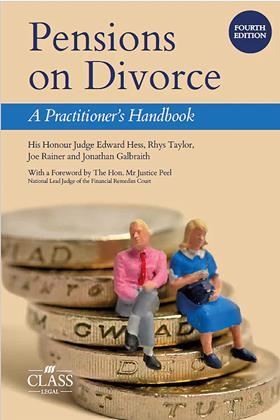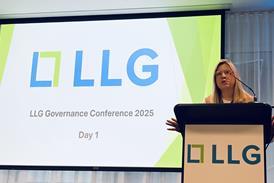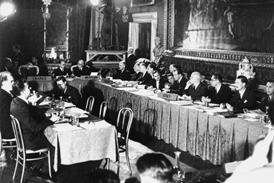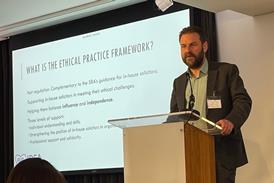Pensions on Divorce: A Practitioner’s Handbook (Fourth Edition)
His Honour Judge Edward Hess, Rhys Taylor, Joe Rainer and Jonathan Galbraith
£200, Class Legal
★★★★★
It is difficult to describe this book without using superlatives. This is unsurprising given that it is written by an all-star cast of experts.
It is worth noting that dealing with pensions in matrimonial matters is one of the biggest sources of negligence claims. This book comes to the rescue of any family lawyer who deals to any extent with financial remedy matters.
Broken down into four sections, it starts off with a section on law and procedure by reminding us that as recently as 1996 the courts had no powers on a divorce to interfere with the rights held by an individual in a pension scheme. Legislation changed that, first with pension earmarking and then pension sharing. In recent years, we have seen much more focus on this area, with two influential reports from the Pensions Advisory Group.
We are then taken through the different types of pension before exploring cash equivalents and associated actuarial valuation issues. Within the first section, there is an extremely useful chapter on what constitutes a pensions on divorce expert (PODE) and when they should be used. A further chapter dedicated to offsetting, a common method for resolving pension issues whereby pension assets are compared with non-pension assets to calculate how much of the former may be exchanged for a greater share of the latter, is key.

The second section relates to actuarial matters. The detailed analysis of specific pension schemes is particularly useful – for example, the Armed Forces Pension Scheme, the Police Pension Scheme and the Firefighters’ Pension Scheme. As well as these ‘shorter career’ public schemes, the book looks at ‘longer career’ public sector schemes such as the Local Government Pension Scheme, as well as examining some private sector schemes with the likes of British Airways and others.
The third section contains legislation, both extracts from statute and statutory instruments.
The final section contains miscellaneous reference material. Among these are the relatively new Galbraith tables, devised by one of the book’s authors, for use in offsetting calculations.
This really is an excellent, not to mention indispensable, work. It should be found on the bookshelf of any financial remedies lawyer at whatever stage in their career. However, its appeal is not confined to the legal profession but extends to PODEs and accountants. It is surely worth its price.
Tony Roe, a family law partner at Dexter Montague LLP, Reading, is an arbitrator, collaborative lawyer and mediator working towards accreditation































No comments yet